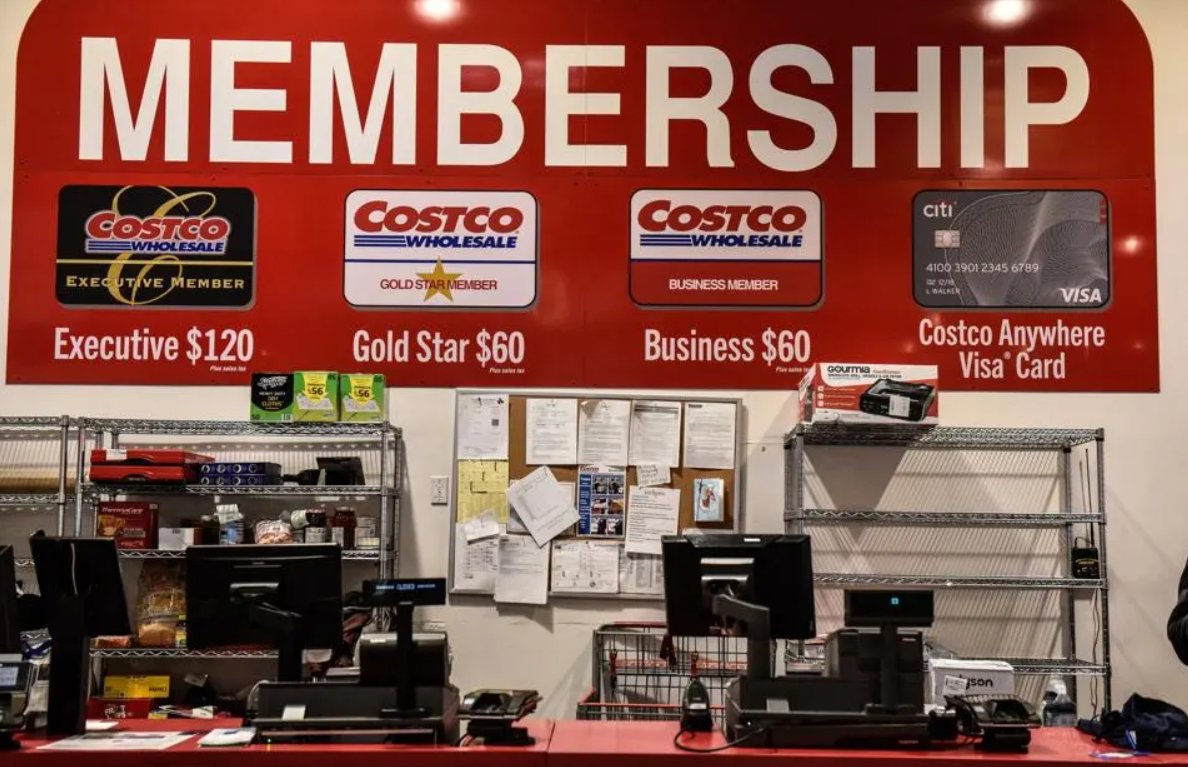Last week Marketing Brew announced that Costco planned to launch a retail media network. Their strong loyalty membership program will help strengthen Costco’s retail media network. Costco can shop in-store and shop online through 74.5 million paid household membership cards, up 7.8% from last year. Costco is the third-largest retailer in the U.S., with global sales of $217.5 billion in 2022. Costco had 861 warehouses in 2023, with the majority (591) located in the U.S.
The data collected from their membership program will allow Costco and advertisers to better target shoppers with relevant ads based on their shopping behavior. Only members of Costco’s loyalty membership program can purchase products. Mark Williamson, assistant vice president of retail media, tells Marketing Brew, “We’ll not only help you reach the Costco member; we’ll help you reach the right members in the right context based on past behavior.” Nich Weinheimer, EVP of strategy at Sky, adds, “The launch of Costco’s retail media network is an exciting opportunity for advertisers.
While there may be some initial hesitation on the part of advertisers because Costco is for ‘members only’ and therefore not as broad or far-reaching, it’s actually a great way to effectively target shoppers because membership retail media networks can provide advertisers with online and offline targeting and the holy grail of membership. Because Costco tracks everything each member buys, the data on purchase behavior is nearly unmatched. This means ads can be specifically targeted to loyal shoppers based on their recent purchases, behavior, demographics, cart size, and more.
” Retail media networks have become one of the fastest growing ad-supported media channels. eMarketer estimates that global ad spend for RMNs will reach $140 billion in 2024, an increase of 21.8% year-over-year. In 2025, global ad spend for RMNs is projected to reach nearly $166 billion.
This year, RMNs will account for nearly a fifth of all digital ad spend, ranking third behind search and social. With privacy laws coming into effect, phasing out “cookies” and “walled gardens” from major digital media companies, RMNs with their access to first-party data have become attractive to advertisers. Compared to other retailers, Costco is a late entrant in launching an RMN network. Costco’s Williamson notes, “It’s not wrong to characterize Costco as lagging behind the rest of the industry in retail media.”
The country’s largest retailer, Amazon, remains the category leader with a 77% share of U.S. retail media ad spend, although growth is slowing with more RMN competitors. Still, in the U.S., Amazon’s retail ad revenue is expected to reach nearly $42 billion this year. In 2021, the country’s largest retailer Walmart launched Walmart Connect, generating $3.4 billion in global revenue in 2023, a +30% increase year-over-year.
In February, Walmart acquired Vizio, a smart TV maker with 18 million active accounts that can be used to target ads. Target’s RMN Roundel is projected to generate more than $1.5 billion in revenue in 2023. By comparison, Costco generates $225 million in digital ad revenue in 2023, according to estimates from BMO Capital Markets. Regarding Costco’s RMN, Sky’s Weinheimer said, “It clearly offers benefits to brands whose products are available at Costco, but it’s also important to recognize the opportunity beyond that.
Costco members are loyal and place great trust in the Costco name. Thus, companies in the travel, telecommunications and other service sectors can benefit by investing in Costco’s retail media network, allowing them to reach new, targeted audiences through Costco’s treasure trove of first-party data, as well as physical space in Costco stores to create in-store activations and direct customer interactions, as there is so much square footage available in traditional Costco stores.”
Over the past few years, several companies have launched their own RMNs. These include retailer Kroger, which expects revenue growth of 20%, reports eMarketer. Also, Instacart expects revenue from their RMN to reach $1 billion this year, up 16% from 2023.
To launch an RMN network, it is necessary to collaborate with data companies in building programmatic ad buying. This can include managing first-party shopping data, enhancing targeting capabilities, creating different ad formats and content, facilitating shoppers’ interactions with advertisers, among other capabilities. RMN ads can be found on a store’s website, mobile app, or brick and mortar screens. In developing its RMN, Costco is reportedly evaluating potential partners and beta testing the management of its shopper data and targeting capabilities.
Other large retailers that are using shopping data from customers include Home Depot’s Orange Apron Media, which has a database of about 200 million customers. In April, Chase launched the Saks Media Network that works with luxury brands and advertisers. Best Buy has partnered with CNET that will provide information on products and improve shopping experiences. Lowe’s One Roof Retail Media Network was launched in 2021 that uses first-party in providing consumer information and product information. Recently, Lowe’s has been working with Google to improve its RMN capabilities. Macy’s and Bloomingdale’s have had RMN since 2020.
Developing an in-house advertising business using first-party data goes beyond traditional retailers. In April, Chase launched Chase Media Solutions, a digital media platform that allows brands to connect directly with its 80 million customers and 6 million small businesses based on shopping habits. Also, in April, T-Mobile enhanced its advertising capabilities by launching an in-store retail media network. This year, T-Mobile gave a presentation at the Digital Media NewFronts informing advertisers about the targeting capabilities of T-Mobile advertising solutions.
In May, Expedia announced they were consolidating their first-party data with the aim of building out their programmatic advertising and data portfolio. Looking for revenue opportunities in 2022, both launched their own advertising business using first-party data. Uber Advertising said they expect to generate $1 billion in advertising revenue this year. Also, in 2022, Marriott launched its RMN. At the time of its launch Marriott had first-party data on 164 million members of its Bonvoy loyalty program.
